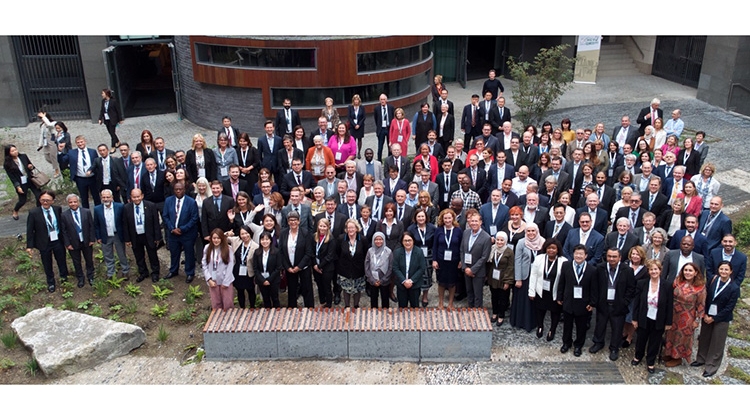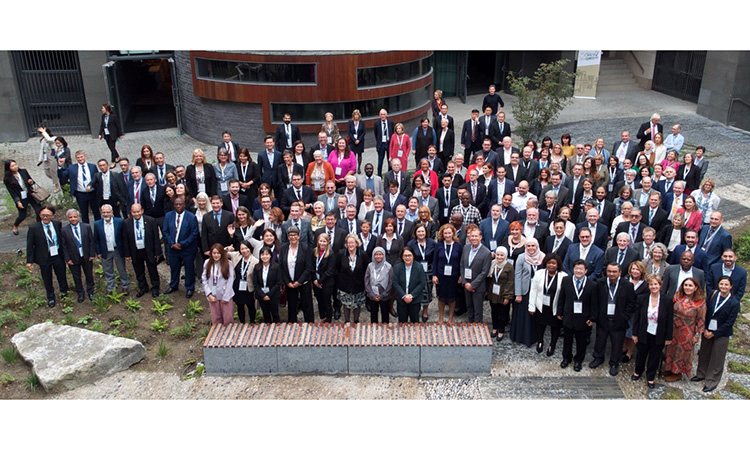Close to 200 participants from all continents participated in the event, including most of PIC/S 54 Participating Authorities and seven Applicant Authorities, PIC/S Partner Organizations, former PIC/S Chairpersons and invited industry organizations such as ISPE. ISPE was represented by Tom Hartman, ISPE President & CEO; and Thomas Zimmer, ISPE Vice President Europe Operations.
The Symposium program comprised a wide range of presentations and panel discussions on GMP-related topics, which included participation from Heads of Medicines Agencies, Heads of GMP Inspectorates, official PIC/S representatives and ISPE.
Some of the highlights of the presentations given during the Symposium were as follows:
The PIC/S Chairperson, Paul Gustafson, Health Canada, presented on PIC/S’ new strategic plan for 2023-2027 which covered the following elements:
- Promote, improve and monitor inspection reliance amongst PIC/S member authorities.
- Empower PIC/S as the preferred forum for GxP harmonization.
- Continue to advance the PIC/S’ Inspectorates Academy (PIA) as an on-line training platform for globally harmonized training & qualification of GMP inspectors, which is critical for allowing and maintaining “inspection reliance”.
- Prepare GMP Inspectorates for the future by equipping inspectors with skills and training to inspect new technologies, ensuring that GxP standard guidance is not an obstacle to the development of new technologies.
- Continue active cooperation with strategic partners, encourage PIC/S membership and strengthen PIC/S communications and engagement.
- Build PIC/S operational capacity by securing new revenue streams, implementing fiscally sound financial plans and increase transparency to the PIC/S community.
The PIC/S Deputy Chairperson, Susan Laska, US FDA, outlined the evolution of pharma industry and PIC/S, including background information on the operations of PIC/S.
The keynote speaker, Emer Cooke, Executive Director of the European Medicines Agency (EMA) and Chair of the International Coalition of Medicines Regulatory Authorities (ICMRA), addressed the Symposium on how to strive for better international relationships and collaboration. She indicated that the pandemic had taught us that more reliance and trust and better information sharing around inspections can help us get the most out of limited resources while focusing on areas of highest risk; the role PIC/S plays here is more important than ever as the global platform for international collaboration on inspections.
Ms. Cooke said that innovation is happening at a fast pace and we should ensure that regulatory requirements don’t create bottle-necks for innovation; we want to move with innovation, not against it. And it is important that our regulatory responsibilities allow innovation to thrive. She said that international authorities should work together through PIC/S to adapt GMP for innovative manufacturing technologies.
Professor Jan Rosier, University College, Dublin discussed risk and risk aversion considerations undertaken by regulators, indicating that the task of regulatory authorities is to ensure that only drugs for which the benefits outweigh the risks are approved. He said the changing innovation context in the pharmaceutical industry is wide-ranging, and this will require a novel approach in educating and training an effective GMP inspectorate that is capable to address future innovative developments. It will also require intensive collaboration between assessors and inspectors and a common and aligned approach with respect to risk assessment.
Jacques Morenas, ANSM, France discussed PIC/S’ involvement in ICH Q12 implementation. He indicated that PIC/S participates in the ICH Q12 implementation Working Group. He said that PIC/S had identified the need for GMP inspectors to be provided with training and guidance documents on how to evaluate Pharmaceutical Quality Systems, with training material currently being developed.
Theresa Mullin, US FDA/CDER discussed ICMRA’s strategic initiative on “Global Pharmaceutical Knowledge Management Systems” to enable the enhancement of regulatory reliance and agility. She indicated that this initiative would help facilitate:
- Transitioning to harmonized, structured and standardized electronic formats to support risk-based targeted oversight by regulators.
- Developing a framework that might, in time, support full harmonization of data elements submitted in the quality modules of the common technical document.
- Enabling more extensive mutual reliance so that regulators can be assured of the comparability of assessments and related determinations.
The initial phases of the initiative would involve concurrent pilot projects of collaborative hybrid inspections and collaborative assessments of CMC.






